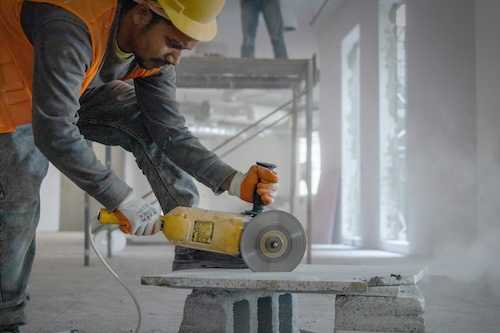In Mexican construction, safety has always been a critical issue. However, in recent years, global figures are beginning to give us signs of hope: deaths in the use of motorized access platforms (MEWPs, elevators and similar equipment) fell by 26% in 2024. Positive news, but it also reminds us of something: the risks remain the same, and the only way to control them is that Everyone at the construction site feels confident to speak up when something isn't right.
Risks don't change, although technology does
El IPAF Global Safety Report shows a clear pattern: the six major risks remain almost the same year after year:
- Electrocutions and electric shocks
- Machine rollovers
- Entrapments (sometimes also “crushes”)
- Falls from the platform
- Hits by falling objects
- Mechanical or technical faults
Even if the statistics or the most used equipment change, the reality is that these six are still the ones that generate the most accidents. And if we talk about Mexico, it is enough to visit a construction site to find several of these risks present in everyday life.
The Global Campaign Stop Overturns! has already shown how focusing on a single risk can dramatically reduce serious incidents. The lesson is clear: In security, detail matters.
Reporting saves lives
A critical point of the report is the importance of Report incidents and near misses. Today in Mexico there is still a fear of “looking bad” if an error or risk is reported. But the reality is that the more information that is shared, the easier it is to detect patterns and prevent tragedies.
And be careful: you don't need to fill out a 20-sheet file. Often a photo, a quick note or a direct comment to the supervisor is enough. Anonymity is also an option. The important thing is not to remain silent.
In the words of IPAF itself: “The report is not for scolding, it is for learning and making the industry safer”.
The role of bosses and supervisors in construction
Something that the report also makes clear is that many times accidents are not only due to the machine operator, but to a bad management decision.
- A team is placed on unstable ground.
- Uncertified outdoor machinery is used.
- The segregation of the work area is omitted and cars or people end up driving around.
- Several fronts are allowed to work vertically at the same time, without exclusion zones.
All of this can be avoided with adequate training for supervisors and managers, who often do not receive specific training on access platforms. In Mexico, this is even more critical because training is usually focused only on the operator.
Practical steps to improve safety on site
- Choose the right equipment: Is the machine certified for outdoor use? Does the floor bear the load?
- Delimit exclusion areas: Prevents a car, forklift or pedestrian from approaching the machine.
- Sequence of work: Never work above/below someone on a platform.
- Reinforce the culture of the “tall”: Anyone should be able to stop a job if they see a risk.
- Ongoing training: not only for operators, but also for supervisors and middle managers.
Safety culture: the pending challenge in Mexico
Perhaps the biggest challenge is not in the equipment or in the training, but in the Culture. How many times have we seen that a worker detects a risk but prefers not to say anything “so as not to get into trouble”?
Creating an environment where it's safe to talk is key. Work leaders must make it clear that they would rather waste an hour reviewing a possible risk than losing a partner in an accident.
Conclusion
Motorized access is still one of the ways Safer to work at height, provided that processes are respected, the right equipment is chosen and, above all, everyone in the play feels free to raise their voices.
Safety isn't about luck, it's about prevention, culture and shared responsibility.

